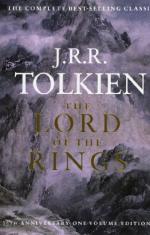|
This section contains 140 words (approx. 1 page at 400 words per page) |

|
Physically Middle-earth resembles modern Earth. It is the inhabitants that add the touch of unreality that a reader expects in what Tolkien calls a "secondary" world. In making a world for his hobbits, elves, wizards, dwarves, ents, orcs, ringwraiths, and other unusual beings, Tolkien assumes the creative rights which he says in his essay "On Fairy-stories" belong to the storymaker: the right to be free with nature; to use the world as a basis to make something new, while giving this new world its principles of inner consistency. Much of this mythology and history of Middleearth comes through songs that pervade the narrative, but a more organized "history," complete with dates for the four ages of Middle-earth and genealogies of major families of elves, dwarves, hobbits, and human beings, is included as an appendix to the third volume.
|
This section contains 140 words (approx. 1 page at 400 words per page) |

|




